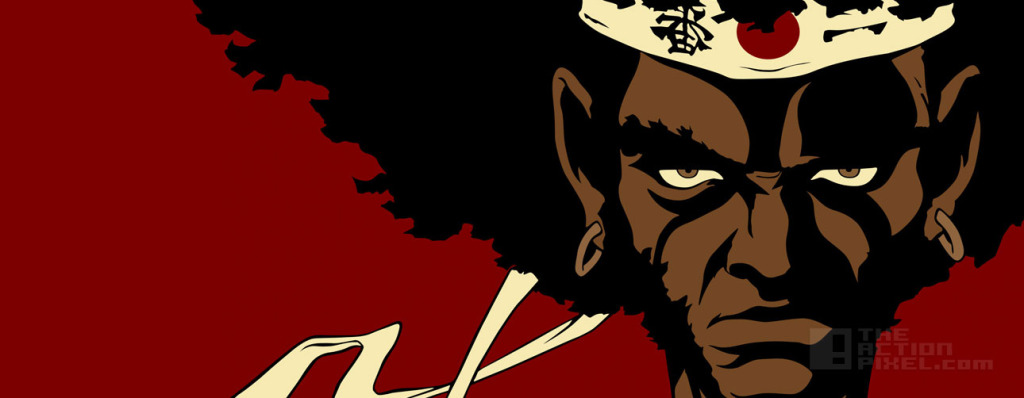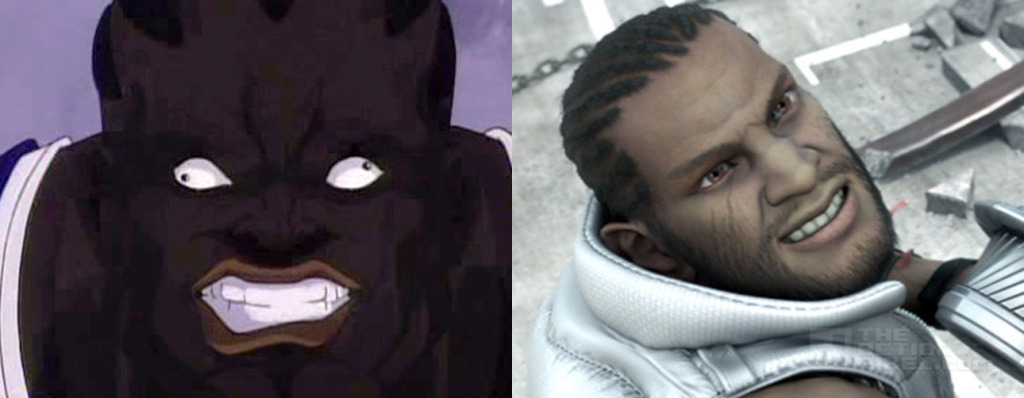
You know the saying that goes something like “if one seeks revenge, dig two graves?” Well, for Afro Samurai, he couldn’t dig a trench fast or wide enough to bury all the dead that fall before his sword.
Afro Samurai follows the tale of little Afro, who witnesses the beheading of his father by the gun-slinging law-man Justice. Afro’s father, the holder of the elite, coveted Number 1 headband, was the greatest swordsman in the world. Now that Justice has taken the No. 1 headband, little Afro’s revenge can only happen if he get’s the No. 2 head band. And while the bearer of the No. 1 head band can be challenged only by the bearer of the No. 2 head band, any vagrant and vagabond can challenge the bearer of the No. 2 head band. It’s hierarchal cut-throat pyramid-scheme of power and primal sanguineness.
Based on the manga series by Takashi Okazaki, the animation merges popular culture in the form of hip hop and soul with that of feudal Japan, all thrown into a dystopian future where the sword exists alongside androids with chest-mounted laser penis cannons and cloning bio-technology.
Afro Samurai, I can honestly say is not the most entirely original narratives along the themes of revenge and to some extent the weight of carrying on a father’s legacy. But its attempt to show a representation of black people is a noticeable effort, even a commendable. Anime, over the decades, when it comes to that rare moment of black representation present, what usually is put forward is the oafish, negative characterisations that comes from the Eastern European stereotype barrel and other negative cultural influences. But Takashi’s attempt to create an anti-hero with presence (who happens to be black) is something I haven’t seen done before.
And of course stereotypes will always be present; anime tends to exaggerate actions and features to make more memorable and unique narratives and characters. Ninja Ninja appears a lovebly loud, smack.-talking side kick voiced by Samuel L. “Motherfucking” Jackson. What’s not to love? What is also interesting is Ninja Ninja is a figment of Afro’s imagination, a coping mechanism to deal with the turmoil of witness the horrors of murder and loss. And in that lies the fact why Ninja Ninja is more loveable than offensive.
But the key element of any representation is balance. Ninja Ninja is the polar opposite of the brooding, ‘quiet-waters-run-deep’ Afro. Ninja Ninja’s a coping mechanism of Afro’s active imagination that has witnessed countless slaughters. If it was just a loud mouth black guy who’s drawn like Boxer in Street Fighter 2: The Movie, with the pathetic, impact-less significance like Barret Wallace’s presence in Final Fantasy VII: Advent Children, then we’d have a problem.

Anime, WTF?!
We don’t expect saint-like portrayals of black people every time. We sure as hell don’t want any images that looked like they were churned out by the Aryan nation’s propaganda wing either. We want unique characters and narratives. And whilst
Afro Samurai pulp-y, blaxploitation-y stylised anime may not offer the complexity that creates standout narratives, its attempt at representation of black people as central, pivotal characters in Anime, surely has placed it on the road less-travelled toward richer storytelling.